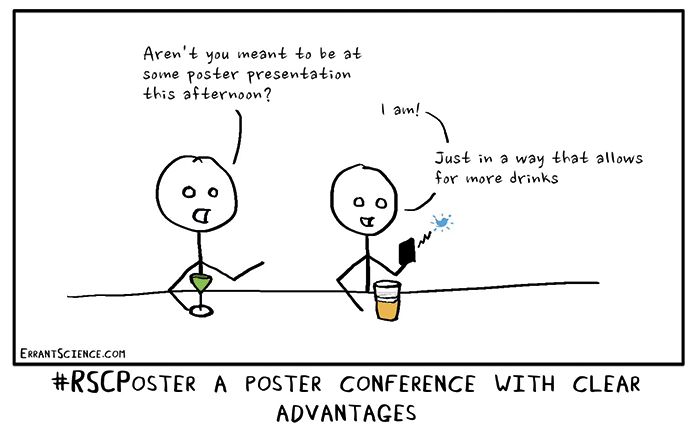How do Twitter poster sessions work?
Participants tweet an image of their poster with the title and hashtags #RSCPoster and the area (e.g. #RSCAnal) at any point throughout a 24-hour period. This means that people anywhere in the world can join in. When I had the idea I got in touch with RSC around October 2014 and they backed it. We were able to hold the first one early in 2015 and it’s grown from there. For the RSC Analytical Twitter Poster Conference 2016 we had excellent engagement, with 2,670 tweets, 435 contributors, 815,866 audience members, 2.9m impressions and more than 80 posters over 24 hours.




